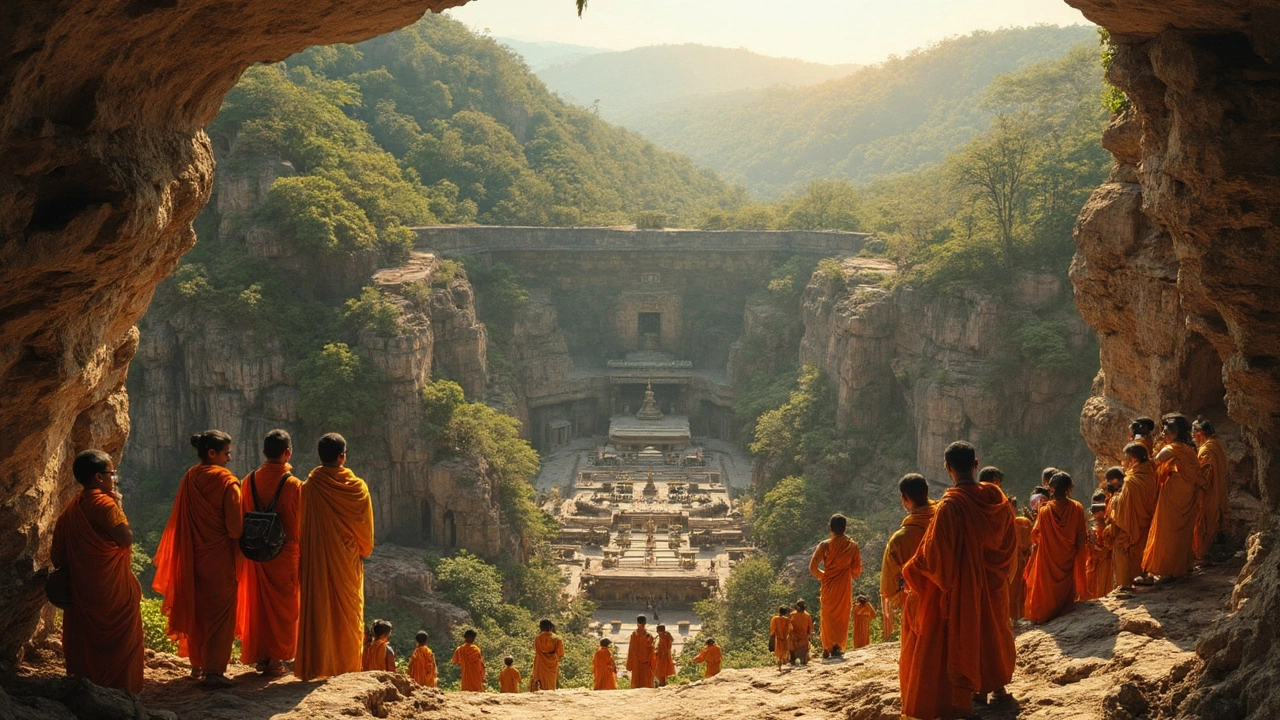
First Indian Art Masterpiece: Discover the Ajanta Caves’ Timeless Brilliance
Uncover how the Ajanta Caves became the first masterpiece of Indian art, why they still captivate the world, and what makes their history and detail unforgettable.
When you think of ancient Indian art, you might picture temple carvings or statues—but the Ajanta Caves, a series of 30 rock-cut Buddhist cave monuments in Maharashtra, India, dating back to the 2nd century BCE. Also known as Ajanta Ellora caves, they are among the finest surviving examples of early Indian painting and sculpture. These aren’t just holes in a cliff—they’re fully formed temples and monasteries carved by hand into volcanic rock, with walls covered in vibrant murals that tell stories of the Buddha’s past lives.
The Buddhist art, a visual language of devotion and storytelling that flourished in ancient India here is unlike anything else. The murals show kings, merchants, dancers, and monks in rich detail—every fold of fabric, every expression, every gesture was painted with natural pigments made from minerals and plants. These weren’t just decorations; they were teaching tools for monks and pilgrims. The rock-cut architecture, a technique where entire structures are carved directly into solid rock, rather than built with separate materials used here is just as impressive. No bricks, no mortar—just skilled laborers using chisels and hammers to turn a cliff face into a sacred space over hundreds of years.
What makes the Ajanta Caves special isn’t just their age. It’s how alive they still feel. The colors haven’t fully faded. The faces still seem to watch you. The scenes of music, dance, and daily life feel as real today as they did 2,000 years ago. These caves were abandoned for centuries, hidden by jungle, until British soldiers stumbled upon them in 1819. Since then, they’ve become a UNESCO World Heritage Site and a key part of India’s cultural identity.
You won’t find crowds here like at the Taj Mahal. But if you’ve ever wondered how ancient people expressed faith, beauty, and storytelling without cameras or books, the Ajanta Caves answer that question in color and stone. The posts below dive into related topics—how these paintings compare to other ancient art, why Buddhist stories were painted this way, and how modern conservation efforts are trying to preserve them before time erases them for good.

Uncover how the Ajanta Caves became the first masterpiece of Indian art, why they still captivate the world, and what makes their history and detail unforgettable.